To be the ultimate “green” RVer must surely be the goal of every thoughtful traveler. None of us who love the places we visit would ever want to spoil those places for future generations. So, although in today’s world it is not yet possible to be 100% sustainable, or achieve Zero-Waste, we set out here our plan to help our readers achieve ethical RV holidays. Holidaymakers can minimize their own impacts according to the best achievable at present, by choosing the options we suggest. If they follow our “Plan for a Sustainable RV Holiday” below, they will be setting an awesome example for others to follow.
So, what is the problem?
An RV holiday travelling in glorious natural surroundings in some of the most beautiful wildernesses on earth, while still enjoying all the comforts of modern living is a huge tonic. Such holidays create memories to be cherished for a lifetime. What could possibly be harmful in such a pastime? The outcome is all positive, and nobody and none of nature’s creatures will come to any harm from it.
Well, actually. No! That’s not true… Everyone is coming to realise that no matter how carefully we go about our RV holidaymaking, it’s easy to overlook the impact RV’ers are having on the environment.
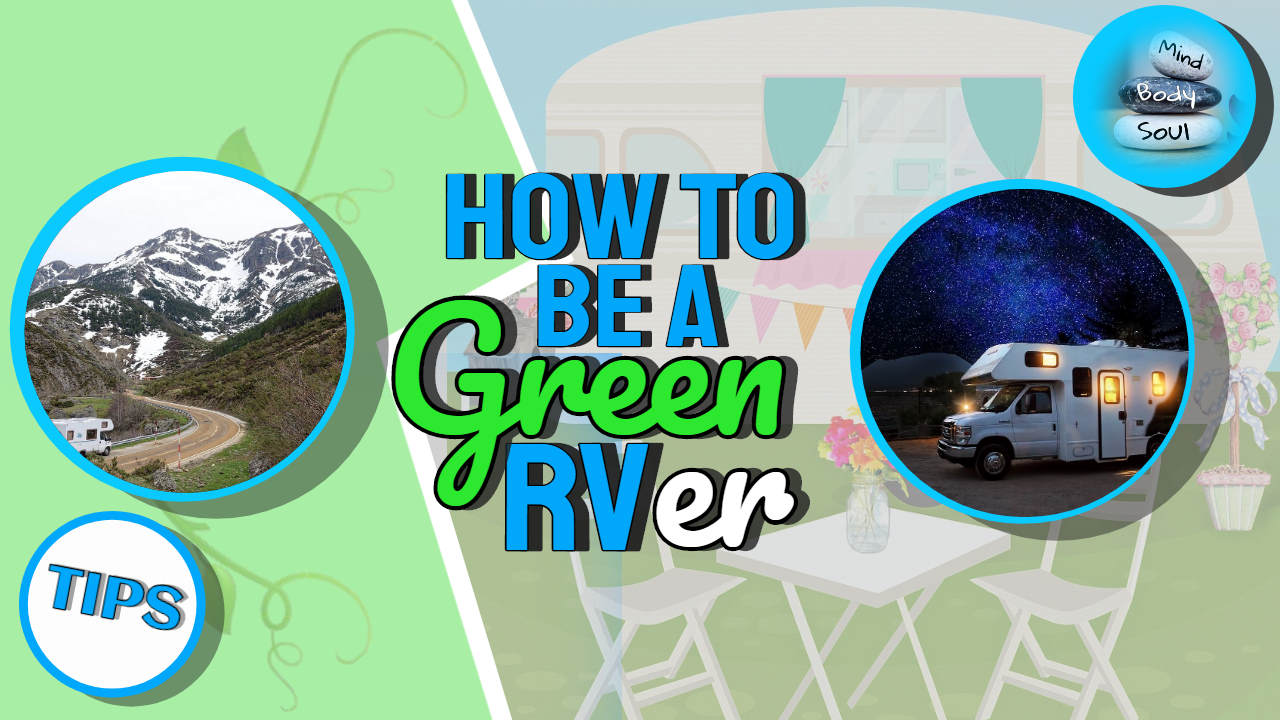
No matter how much we respect the nature and how much we avoid all those things we know, we STILL harm the environment, despite:
- taking our litter home,
- not feeding wild animals
- closing gates behind us
- resisting the urge to pick endangered wildflowers
- controlling our dogs to prevent them from chasing animals, and
- taking care not to cause fires,
just to mention a few. It’s not enough to stop at this list and be a Green RVer!
There will still be an environmental impact. Unfortunately, we all have to realise that everything in this world is interrelated and consequences occur from all our actions.
Sustainability is being spoken about more now than ever. It’s time to take some action and each of us can make a difference! As ex-President Obama said in a recent interview “you can only ignore reality for so long. It has a habit of coming back and biting you…”
If this is something you want to take into account during your RV travels, you can!
All you need is a plan, and you can get started!
Let’s find out how, as we explore the perfect way to enjoy the most sustainable, zero-waste, ethical RV camping holiday. We’ll break down the environmental damage a regular RV holiday entails, before introducing alternatives for you to try.
- Planning a Sustainable RV Holiday
- Chapter 1 – Introduction to Sustainable and Ethical RV Holidaymaking
- Chapter 2 – The Worst Sustainability Offenders at Campgrounds
- Thoughtless and Anti-social Campers
- Poorly Operated and Overloaded Wastewater Treatment
- Pet Defecation and Elevated Nutrient Levels
- Effect on Salmon Spawning Grounds
- Noise and Light Pollution
- Picking Rare Flowers and Trampling on Delicate Plant Species
- Introduction of Non-Native Species
- Causing Fires
- Chapter 3 – Ethical and Sustainable Zero-waste RV Holiday Options
- Chapter 4 – Eco-Friendly Campgrounds
Planning a Sustainable RV Holiday
Chapter 1 – Introduction to Sustainable and Ethical RV Holidaymaking
Do you know how much of an impact your holiday could have on the world around you? Here are some startling statistics which might make you reconsider how you want your RV pastime to be in future.
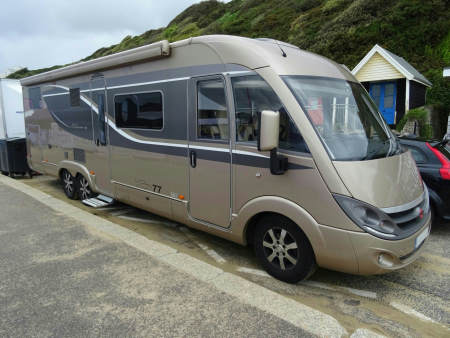 About one-third of all motor vehicle use is for social and recreational purposes. Although RV use is just one part of it, that’s a staggering amount of greenhouse gas which RV use generates!
About one-third of all motor vehicle use is for social and recreational purposes. Although RV use is just one part of it, that’s a staggering amount of greenhouse gas which RV use generates!
US recreational use of vehicles consumes about 36.8 billion gallons of gasoline a year, resulting in 357,000,000 tons of CO2, or about 20% of all US carbon emissions from motor vehicles. via sierraclub.org
This is the biggest single environmental impact from RV use. The number one problem arises from the fuel RVs burn and the resulting impact on climate change. But, as RVs are largely diesel-fuelled the problem doesn’t end there as diesel vehicles are also the worst for their emissions of tiny particles (particulates) and nitrogen compounds (NOx) also harmful to health.
Unfortunately, the list goes on:
Waste Generated by the RV Community at Camp Sites
Everything we throw away which can’t be recycled has a negative impact on the environment. If something isn’t biodegradable, it could take thousands of years to break down naturally.
Plastic is unsurprisingly at the heart of the issue.
Waste generation on campsites is generally higher per person than for built accommodations such as hotels. Campers are more likely to eat on-site, to prepare their own meals, and to undertake various activities during the day on-site, compared with hotel guests, resulting in a higher rate of waste generation (e.g. food and packaging waste) than for hotels. That’s unavoidable, and not necessarily bad. Hotel residents will also be producing waste during the day, so staying at a hotel is not necessarily any more sustainable from this point of view than camping.
A few years ago we would have simply said: “just make sure that you recycle”. And, wherever possible, visit campsites which explain how they also recycle.
However, since then it has been realised that recycling isn’t the whole story, even if it is an important part of it. To be properly “sustainable” to the fullest extent possible the overriding concern is to produce less waste. The watchword now is “minimisation”!
We should all be encouraging waste minimisation and to do this the waste industry has come to realize that this requires the implementation of a comprehensive “Waste Management Plan”. So, when you read about a campsite being good at recycling, be pleased. But, when a campsite brochure says they operate in accordance with a “Waste Management Plan”, be delighted!
Having a plan means that they have thought through what they will do with the waste you leave behind, based on priorities defined in the waste management hierarchy. The “hierarchy” is just a fancy word for looking at the whole waste thing in a holistic way. It’s just a set of sensible priorities which guides us toward better sustainability. These are summarised in the hierarchy below, and need considering in turn for each type of waste:
1. Reduce: Avoid producing waste in the first place – implement green procurement, do not over order, select products with little packaging or returnable packaging.
2. Reuse: Consider where certain items can be reused, sold or donated to others that can use them.
3. Sort: Have a system in place for sorting everyday waste items such as bottles, cans, cardboard and paper for recycling. Consider what else might be recycled, taking into account local disposal possibilities.
4. Recycle: Send sorted waste for recycling.
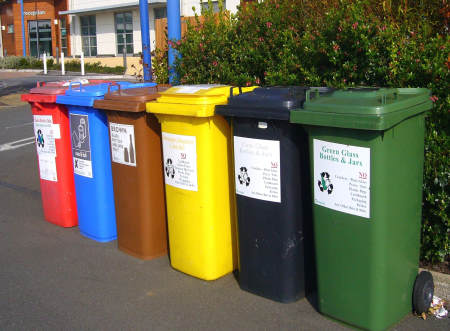 If all this sounds too complicated, don’t worry! As a campground visitor just be aware that there is more to sustainable waste management than purely sorting the waste before you throw it into a recycling bin marked for that type of waste. If you bought milk in a returnable bottle from a local farm, perhaps you might pop-back with your bottles for the dairy to wash and reuse them. Maybe, you even paid a deposit for the bottle and will be paid back your deposit! If you can do these things without going too far out of your way, just remember to do them.
If all this sounds too complicated, don’t worry! As a campground visitor just be aware that there is more to sustainable waste management than purely sorting the waste before you throw it into a recycling bin marked for that type of waste. If you bought milk in a returnable bottle from a local farm, perhaps you might pop-back with your bottles for the dairy to wash and reuse them. Maybe, you even paid a deposit for the bottle and will be paid back your deposit! If you can do these things without going too far out of your way, just remember to do them.
You can, of course, recycle a reusable bottle by throwing it into a glass recycling bin, but if so that bottle will just be crushed with the rest of the glass. The glass material will be recycled. But, reuse is best. Reuse has a much lower impact on the environment than just recycling materials.
When most people recycle they don’t realise it, but what happens is that only the material is recycled. Reuse of the object by simply washing it and refilling it has a much lower environmental impact than “recycling” and that’s why reuse is placed higher in the above “hierarchy” than to recycle.
When recycling takes place the following are examples of what the waste industry does:
- Cans are melted down and used to make new cans.
- Higher quality paper is churned up with water, to make a pulp and cleaned, before it becomes paper again in a lower quality grade.
That sort of recycling means the recycling (reuse) of materials while reuse means the repeated use of that same item after washing. Recycling is really worthwhile because the alternative would be to dig more primary materials out of the ground, fell more trees etc, with higher emissions. Not only that, the sources of primary materials are finite. At some point, without materials-recycling, the raw materials would run out.
But, don’t forget that to “reuse” is awesome, but better still, is to “reduce” your waste (not make it in the first place) is even better!
Just remember that to recycle responsibly:
- Minimise! Reduce waste before you create it! Don’t take unnecessary packaging on holiday with you in the first place. (Have you noticed that some people are even removing unnecessary (especially plastic) packaging BEFORE they leave the supermarket. They may be doing it to make a point to the retailer, but why take unwanted packaging into a natural place where the ecology may be more sensitive to litter pollution than in a town or city? One example is fresh fruit packaging where the fruit has it’s own skin and comes with a clear plastic shrink wrap as well!)
- you have to do good sorting, and also each the items discarded need to be cleaned in the washing-up before sorting
- remember to take home and reuse what you can before you throw it into any of the campsite bins.
The Carbon Footprint of the RV Industry
Rising levels of carbon dioxide (CO2) in the atmosphere have directly led to warmer global temperatures, as warm air is trapped within the Earth’s atmosphere. As NASA highlight, this has directly led to shrinking ice sheets, warming oceans and a general rise in global temperature.
We think that there is no denying that, as we stated previously, although RV use is only a part of recreational RV transport fuel use, it is a significant proportion of the recreational fuel used each year. About one-third of all motor vehicle use is for social and recreational purposes and that’s a huge amount of emitted carbon!
RV fuel use is the largest part of the total RV industry CO2 emissions total footprint. We were not able to find any research to identify just how large. But, RV use is a significant contributor to overall US carbon emissions.
As an RV driver, you can help to minimize your emissions by, for example:
- Driving carefully to accelerate gradually and not dash along, continually breaking at each corner. That way you will use less fuel per mile
- Limit your maximum speed on de-regulated roads, to save fuel
- Always maintain your vehicle by paying for regular servicing because well-tuned vehicles use fuel more efficiently
- When renewing your RV seek out energy-efficient models. New renewable fuel source models will most likely appear soon, just as they are for autos, and hybrid fuel models will also start to appear in the showrooms at reasonable prices as demand for them rises, in the next few years.
Chapter 2 – The Worst Sustainability Offenders at Campgrounds
Thoughtless and Anti-social Campers
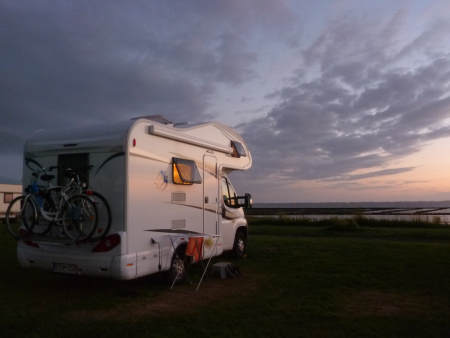 As far as individual visitors are concerned, we have all seen the worst sustainability offending RV’ers, and what a few get up to, and frankly it hurts to call them RVers at all.
As far as individual visitors are concerned, we have all seen the worst sustainability offending RV’ers, and what a few get up to, and frankly it hurts to call them RVers at all.
These are the guys that turn up and simply ignore camp rules and move on before the management can do much about it. They leave their litter around for others to clear up and don’t bother to take their dirty water to the liquid disposal point.
At a less anti-social level, but still without regard to sustainability principles are the campers that:
- Use propane fuelled BBQ’s extravagantly using fossil fuel, when with a little care they could easily use locally grown wood-fuel with close to zero environmental impact. (Only when camp rules allow this though, of course.)
- Similarly in winter, extravagantly burn propane heaters in the open-air when campfires are permitted and would be the sustainable option.
Poorly Operated and Overloaded Wastewater Treatment
Campgrounds most often have their own foul water (sewage) treatment facilities and almost without exception, these water treatment plants are biological aerobic systems. They work well and very reliably in towns and villages where they are usually operated and maintained by experts employed by utility companies. The flow of sewage is reasonably constant week by week because it is generated by a pretty constant population and the pollution load doesn’t vary greatly.
Contrast that with the same task to treat effluent at a campground, and be aware that biological systems being living communities of living organisms can only react gradually when the effluent flow increases (their food source increases). The “biomass” population in any sewage works can only eat so much of the food (nutrients) in the wastewater we throw out, and after that, they can eat no more! Beyond that point, contamination will flow through the facility and out of the other side into the stream or river near the campground.
Consider for a moment the campground water treatment facility operator. Treating the sewage for that manager is almost the perfect storm and is fraught with difficulties! The pollution loading varies constantly from near zero out of season, rapidly to the maximum and will just as quickly drop after holiday periods end. Compound that with the fact that the campsite management will usually have no special skills in operating the water treatment plant. Even if they do, they will be extremely busy serving their visitors precisely when the treatment plant is most heavily loaded and in need of the closest attention to ensure no pollution occurs.
Sadly, campsite treatment plants do occasionally fail to treat the sewage as intended. The observant “green” RVer can do no better when they see or smell an overloaded sewage plant than perhaps make it clear to the site management that the outflow looks dirty, or is foaming, and the water flowing out, is no longer clear and sparkling.
The fact that you noticed and you cared will make a difference.
Pet Defecation and Elevated Nutrient Levels
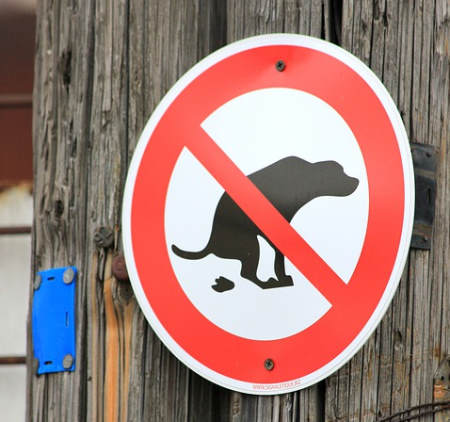 In upland and mountainous areas a paradox often exists. They are rain-washed and often relatively nutrient-starved ecologies in comparison with lowland farming areas. Unfortunately, much damage can and is being done to these wild places because human activity tends to raise the nutrient levels.
In upland and mountainous areas a paradox often exists. They are rain-washed and often relatively nutrient-starved ecologies in comparison with lowland farming areas. Unfortunately, much damage can and is being done to these wild places because human activity tends to raise the nutrient levels.
Yes. Our activities might be called pollution, but most of the effect comes from the effect of fertilizing the ground. Most farmers spend huge amounts of money buying fertilizer elsewhere!
It is paradoxical that whereas, usually the community thrives on fertilising the land to raise food production, but in most wild places the opposite applies. The same fertility rise in most wild places becomes the enemy for their flora and fauna and the sustainable RVer should do their best to avoid raising fertility.
As soon as the fertility is raised the natural ecology is in danger from more common species which simply outgrow and out-compete the, more delicate low-nutrient adjusted, upland and moor ecologies.
In such locations picking up your dog’s poo is necessary, not just to avoid others treading in it. It also needs to be removed and taken away to avoid nutrient build-up.
Even the wee from thousands of dogs and other pets tends to raise the nutrient level in the ground and can be damaging to the wildlife balance.
If the same nutrient rise occurs in rivers and streams a similar effect occurs and the result is known as the Biochemical Oxygen Demand (BOD) rises. Why should that matter?
It matters because fish and other higher-level aquatic species are very sensitive to the level of dissolved oxygen in the water for their health.
Effect on Salmon Spawning Grounds
Raised BOD and nutrient addition, causes increased growth. Mud and silt are also often deposited as a result of human activity. Once bright and sparkling upland streams become just a little bit less so. If stream beds become covered in a fine layer of mud and aquatic growth, fish such as salmon die out. It has been shown that the loss of clean shallow vegetation-free stream bed habitats jeopardises salmon breeding.
Despite the herculean effort of the adult salmon to eventually swim up our great rivers to reach their spawning grounds breeding is failing right at the last moment. The salmon need the areas of their ancestral stream beds which were once pure clean gravel onto which to lay and fertilise their eggs, and sadly human activity is putting many of those at risk.
Unfortunately, in this way, in some delicate ecologies even the churning up of mud beneath the wheels of our vehicles, which gets washed into streams, has unwelcome effects.
Noise and Light Pollution
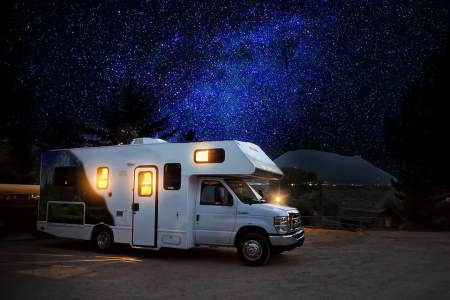 Noise and light pollution is usually a minor cause of impact on the wildlife and ecology around camp sites. Nevertheless, in principle, the green RVer would normally be attracted to campsites where they value starry dark skies, free from light pollution.
Noise and light pollution is usually a minor cause of impact on the wildlife and ecology around camp sites. Nevertheless, in principle, the green RVer would normally be attracted to campsites where they value starry dark skies, free from light pollution.
Such camps provide the minimum of camp street lighting which is needed for safety reasons. Likewise, rules on the quiet occupation of the site will minimize the impact of campers on the wildlife and raise the chance that far from being frightened, wild animals will be seen going about their daily lives from the parked RV’s.
Picking Rare Flowers and Trampling on Delicate Plant Species
The idea that rare flowers should not be picked and certainly never trampled underfoot or under vehicles, won’t be new. It is worth noting that many rare wildflowers are picked each year by children to bring back to the imagined delight of their parents, before being told not to do so. This may even happen while the parents are busily leveling the RV within the first moments of arrival at a campground.
The thoughtful RVer should explain to their offspring before the arrival of the dangers of picking such rare blooms
Introduction of Non-Native Species
People have been introducing non-native species to wild places where they can in the worst cases wreak havoc on the ecology for as long as there has been travel. It’s certainly been happening ever since the first explorers set sail and their rats and ships cats jumped ship and set foot on the shores of new places. It is still happening now, although usually in less dramatic ways. The green RVer takes care to observe national park and any other local rules where they place limitations on species brought into a park.
Causing Fires
To take care not to cause fires, is an obvious one. Only light fires when and where they are allowed, and if in doubt in dry periods and arid locations, don’t light fires at all for BBQs or any other reason. Also, take great care if you smoke.
Don’t worry, though. These are all things that what might go wrong. They don’t need to happen!
The Chapter just ended, is all about common aspects of RV use and campground management. Alternative, eco-friendly options, have already been created. In chapter 3, we’ll look at exactly what those options are. Follow our options and have a lovely, relaxing, holiday because you will be a good example of a green RVer!
Chapter 3 – Ethical and Sustainable Zero-waste RV Holiday Options
We’ve seen what some people are doing wrong, but how can you combat that? Holidaymaking in an RV in a manner that’s as close to a zero-waste traveler as can be. You will be as sustainable as possible. We are all on a sustainability journey now. It doesn’t have to be hard! Let’s discover how you can make each aspect of your amazing holiday more eco-friendly.
Choice of RV Vehicle
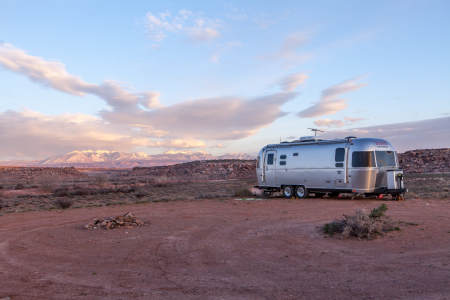 The biggest single impact of RV use is the huge carbon emissions from the fuel they use. There is no changing the existing fleet, but new models need to be far less damaging.
The biggest single impact of RV use is the huge carbon emissions from the fuel they use. There is no changing the existing fleet, but new models need to be far less damaging.
As we have hinted already, what you can do is to vote by your actions for the motor industry to get to grips with sustainability. Insist on new, better-designed vehicles at affordable prices which are fuelled by renewable energy. For RV vehicles we rather doubt that electric battery-powered RVs will have the range needed, nor the recharging points in remote places, to make electric RVs possible any day soon.
But. alternative fuels and engines to burn them, are already available. Fuels such as bio-ethanol, biodiesel and even methane-powered vehicles, have been in use for years now in Europe. Again, as for electric charging points, the adequate distribution of refuelling points still has to be addressed. However, the technology is available and with enough consumer pressure the manufacturers and government, bodies will find a way to make renewable transport fuels available.
Cost is no longer a problem for renewable energy sources, and in many cases, renewable is actually becoming significantly cheaper, relative to oil sources.
It’s not rocket science, and although it may be a deal to get done, we did get to the moon and that now seems routine while governments now plan trips to new planets! It would be unthinkable not to sort this our home planet out meanwhile!
Choice of Holiday Clothing
Textile manufacture has become a major source of both environmental impact and carbon emissions. The carbon emissions have been known but not well-publicized for many years, and the level of carbon emitted by the clothing industry has crept up due to the low cost of imported clothes. This has resulted in our buying just so much clothing! We use ever more of it, for shorter periods, and discard it making for a mountain of waste.
But, there is worse to come, and that is the problem of microplastics in our seas, a lot of which is thought to come from our man-made-textile based clothes.
In the last 2 to 3 years there has been a huge awakening globally to the dangers to all sea life of the small pieces of plastic hazard to the oceans. All plastics float and that hurts wildlife. But, plastics also break done into ever smaller particles called micro-plastics. What simply never occurred to scientists until recently was that man-made textile fibres break down into these micro-particles from the moment we first put them on.
It is hard to believe but science has been completely blind to the manner in which these microparticles of plastic get into the environment via our washing machines, or blow around in the air. They go through sewers and water treatment works as well and out into our rivers. They will now float around unseen for millennia in our oceans. The real problem occurs when they become concentrated at the sea’s surface due to their density close to and slightly less than water. They wash up on beaches just where aquatic life is most diverse and abundant in the inter-tidal zones, and get eaten by and damage the viability of the small organisms. These organisms are the very organisms which the fish we eat consume. Yes! We are increasingly eating plastics from our own clothes when we eat fish!
The general press is full of recommendations for buying green when planning your wardrobe and the green RVer need do no more than follow that guidance.
Travel Distance and Fuel Use Conservation
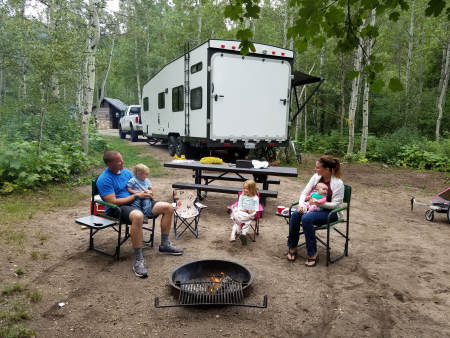 The fewer RVs on the road, the lower the level of emissions. To go to the next level, you could even avoid driving to your holiday location and take a train or a coach instead and hire an RV close to your destination.
The fewer RVs on the road, the lower the level of emissions. To go to the next level, you could even avoid driving to your holiday location and take a train or a coach instead and hire an RV close to your destination.
However, for those RVers that simply love the journey as much, or more, than “getting there”, we don’t see why you should feel guilty about just jumping into your RV and enjoying the open road!
Using alternative, less fuel use intensive, holiday travel options would miss the point entirely. But, maybe you might cut back on your fuel use for the rest of the year instead?
Energy Use While Away
RV’s use fuel while on-site and while temperatures are warm that is consumed mostly as electricity. Until recently to use solar panels on an RV usually involved setting up a small array beside the RV at each campground and that was yet another task to complete at every move. Now the options for roof-mounted, light and flexible solar panel technologies with better batteries, are making RV solar much more viable.
You might consider solar again as a green RVer – even if you dismissed the idea in the past.
Choice of Food While Away and Eating Out
Our final option for sustainable RVers lies in their choice of food, and as we all enjoy our food so much while on holiday we gave it an entire chapter! See Chapter 5!
In Chapter 2, we discussed the worst sustainability offenders at campgrounds and the major sustainability issues. Now it’s time to consider how the most eco-friendly camps seek to minimise some of those issues, enabling you the RVer to choose great “green” campgrounds.
Chapter 4 – Eco-Friendly Campgrounds
Yes, even the decision of which campground to choose when you stop, can have a big impact on how sustainable your holiday is. Once again you have a selection of options to choose from.
Campsite Website Approach to Sustainability
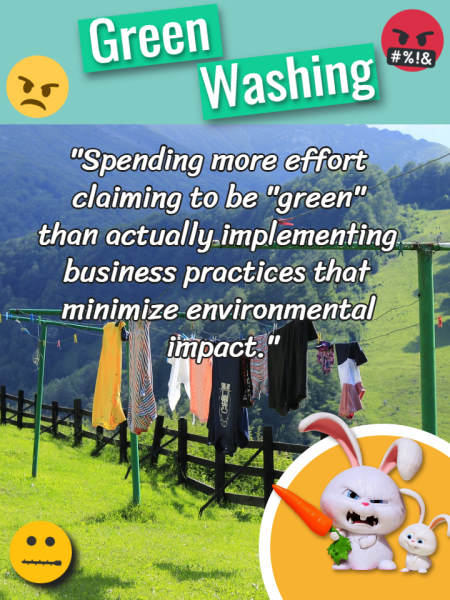 Unless you have been back to a location a number of times the decision here is a matter of reading about the campsites and noting those that publicise their environmental awareness. Of course, the reality may not match the claims of some campground operators. It’s often referred to as “greenwash”! Apart from reading visitor reviews for each site, there is no way around that.
Unless you have been back to a location a number of times the decision here is a matter of reading about the campsites and noting those that publicise their environmental awareness. Of course, the reality may not match the claims of some campground operators. It’s often referred to as “greenwash”! Apart from reading visitor reviews for each site, there is no way around that.
You can only make the choice of the campgrounds you will visit on sustainability grounds based on their description. All we say is that we recommend that you do read and take at least some effort to choose campgrounds which show an awareness of environmental issues in their published information. Most of the time campground owners do love their environment and do operate according to “green” good practise.
Camp in a Local Centre, versus Camp in a National Park
The pros and cons here can only be stated in general principles. It’s doubtful that many people’s decision will in the end be governed by their environmental concerns as the location will no doubt be a core requirement for the holiday. However, an RVer aiming for sustainability will usually want to way up the concerns for the environment under the headings in Chapter 1.
If there should be one campground in a park setting within an area with a fragile or rare ecology and another in a town, or city, a short distance away from the national park area, it may be self-evident if the pressure of visiting tourists risks placing that fragile ecology at risk. If so, in the pursuit of sustainability it may be better to visit an area of outstanding natural beauty (ONB) during the day and return to camp outside the ONB at night.
If the campsite is in a city or town the impact on the natural systems of the area from your presence may be far less than if you camp within the national park area. The reason for this being that town sewage treatment works are professionally operated and your presence is unlikely to provide a significant additional loading when thousands of people living nearby are already using it all year round.
On the other hand, if the distance is great and making access down narrow winding roads each day to the area of ONB would raise the impact of travelling in and out each day, that may be a reason to choose the option of staying in the national park area.
Chapter 5 – Sustainable and Organic Food and Catering
We touched upon this subject in Chapter 1. Let’s face it when on holiday most people don’t give very much thought to where their food is grown and how their food arrives on the plate. But, maybe they should?
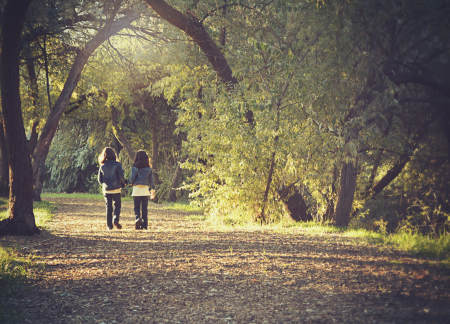 If food wastage and sustainability matters to you, you can adopt a policy of patronising the most sustainable establishment who keep some, or all of the following, in mind:
If food wastage and sustainability matters to you, you can adopt a policy of patronising the most sustainable establishment who keep some, or all of the following, in mind:
Locally sourced
We’ve already discussed the benefits of localised sourcing when it comes to mileage. But it also helps smaller farming communities to thrive. In the process, it increases the likelihood of others being able to get produce from their local community in the future.
Organically produced
While pesticides have their benefits, they also carry harmful chemical pollutants which can have a negative impact on the environment. If you get the opportunity ask your restaurant manager if their products conform to the certified standards.
Tableware offered
You can always provide this yourself, but if you are relying on a campsite shop for everything, make sure they offer sustainable products. When eating at the campsite restaurant this means their cutlery should be reusable, and their takeaways should always be in packaging which is recyclable and biodegradable.
Food waste policy
Ask them what their policy is regarding food that is either unused or not eaten after being prepared. A truly sustainable campsite company should offer food at its use-by date, that hasn’t been cooked, to food banks or charities. Meanwhile, leftover food from the plates of diners that didn’t get consumed can be turned into compost.
Keep all this in mind when choosing your eat-out venues or when selecting where you will shop, if indeed at a particular campsite there do exist alternative shopping options.
Chapter 6 – Other Ways to Reduce your Carbon Footprint
We’ve looked at a lot of intricate ways you can make your RV holidays more sustainable. But what about more top-level planning? Here are a few suggestions to help keep your CO2 emissions to a minimum.
A selective choice of holiday location
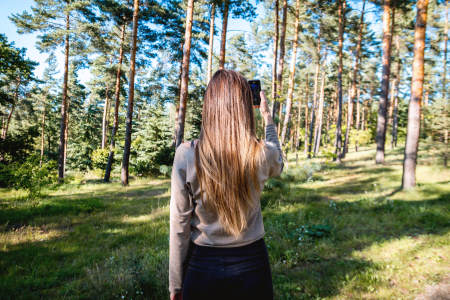 You’ll want to travel in your RV to many different places with those who are important to you. Some will wish to see every scenic location in the whole nation, and that’s fair enough. However, we would like to suggest that it is equally possible to find and enjoy less spectacular natural places close to home. It is all about your approach to such things. Some will be perfectly content to limit their choices to locations closer to home to reduce their carbon footprint. If this could be your and your partner/ family you might like to consider selecting a holiday location not too far distant from your home. The distance of travel is a very important factor when considering the amount of fuel consumed and hence the overall carbon emissions from your trip.
You’ll want to travel in your RV to many different places with those who are important to you. Some will wish to see every scenic location in the whole nation, and that’s fair enough. However, we would like to suggest that it is equally possible to find and enjoy less spectacular natural places close to home. It is all about your approach to such things. Some will be perfectly content to limit their choices to locations closer to home to reduce their carbon footprint. If this could be your and your partner/ family you might like to consider selecting a holiday location not too far distant from your home. The distance of travel is a very important factor when considering the amount of fuel consumed and hence the overall carbon emissions from your trip.
Being more selective for a local location rather than traveling a long distance would have a direct beneficial impact on your carbon footprint.
Pick the right time of year
It might be harder to find a free camping slot in the hotter months, but doing so may mean having to consume less energy heating your RV on an out-of-season date. The natural warm weather of the warmer seasons will help to keep you comfortably warm, without needing to use carbon-emitting fossil-fuelled heating.
Offset your emissions
Find a way to fund or get involved in initiatives to reverse or “offset” the emissions you make. An example of offsetting your emissions is to pay for enough trees to be planted for you to remove as much carbon dioxide from the atmosphere as your trip created. The concerns here to consider are:
- that your carbon emissions will only all be removed from the atmosphere when after say 20 years your tree reaches maturity. So, the replacement of your carbon emissions won’t reduce climate change in the short term.
- you might be duped! If whoever plants the trees for you sells the forest for logging at a later date your emissions will go straight back into the atmosphere! So, offsetting must be on the basis that the forest once planted is given to the local community and under a legal covenant which is set up to bind the community into forever maintaining your trees as a forest for future generations.
Another option exists for the green RVer, in fact for anyone! That is to opt for a green energy supply from your home energy utility company. If your home energy supplier doesn’t offer this you might need to change supplier. An increasing number of utility companies are offering “green” energy tariffs for your domestic energy all year round. By paying something extra for the vast bulk of your home fuel to be supplied from a renewable source, you could avoid all feelings of guilt for holiday emissions this way
Conclusion
Planning an eco-friendly RV holiday doesn’t need to be a chore. Make a mental plan to follow this guide whenever you can. Congratulate yourself for whatever “green options” you do adopt. You will be doing more for the quality of life of future generations than most people. If you do follow any of the advice we’ve offered here, enjoy the “green living” challenge! In your heart-of-hearts, you will know it is doing the right thing.
Family Harmony Clause: But, should your fellow travelers or family members not see eye-to-eye with you on these options, we suggest that none of this is more important than you enjoying your RV holidays. Explain why you would prefer these green options by all means, but don’t let anything we have said cause friction in any relationship. After all, we do think that your personal relationships are more important than anything we have suggested here.
The post Be a Green RVer! – How to Plan a Sustainable RV Holiday and Help Preserve Nature appeared first on Precious RV.
The post Be a Green RVer! – How to Plan a Sustainable RV Holiday and Help Preserve Nature appeared first on GQ Central.
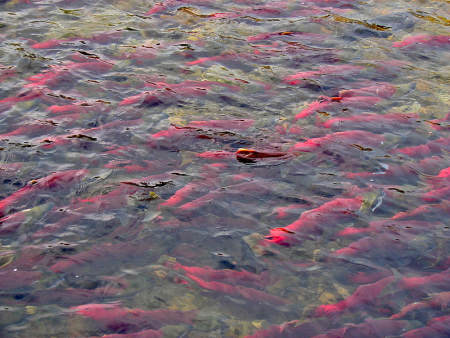
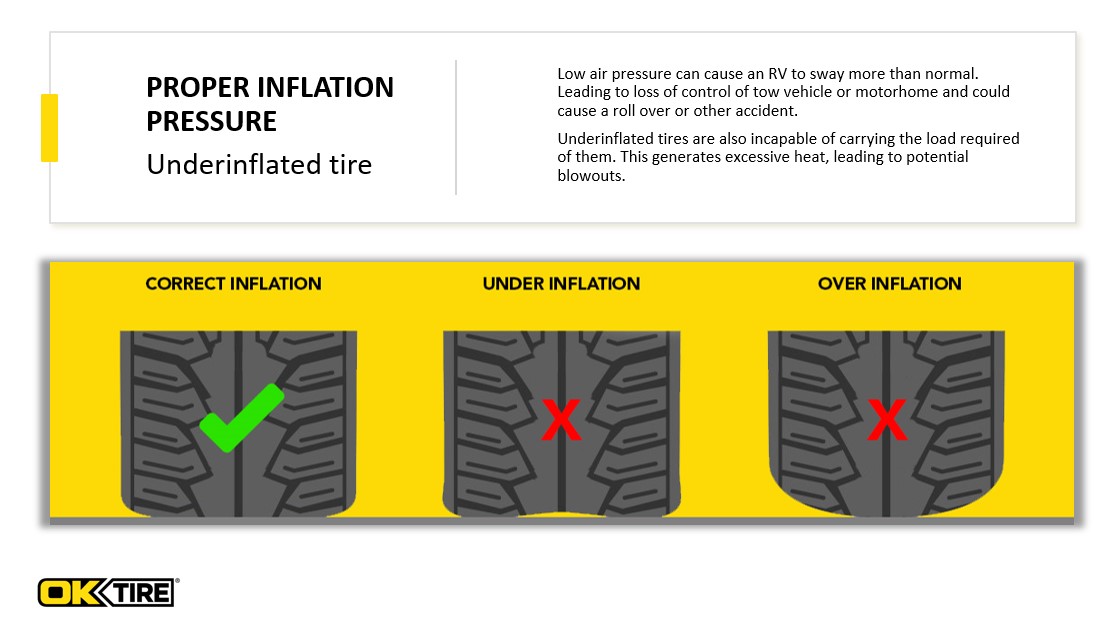

Recent Comments